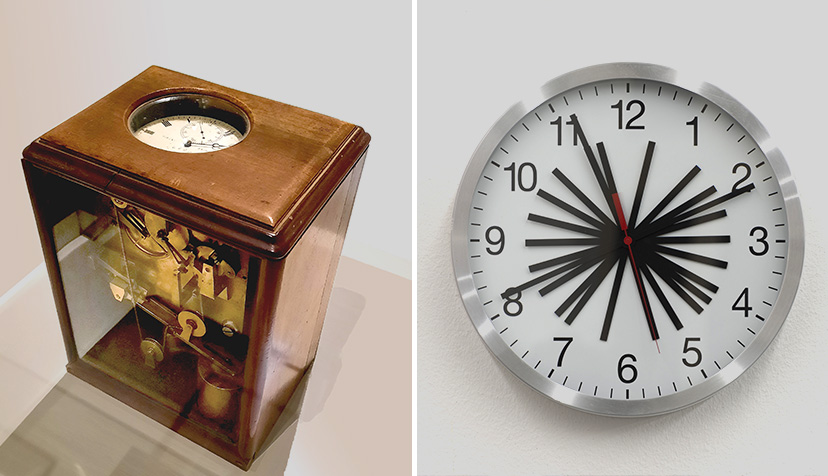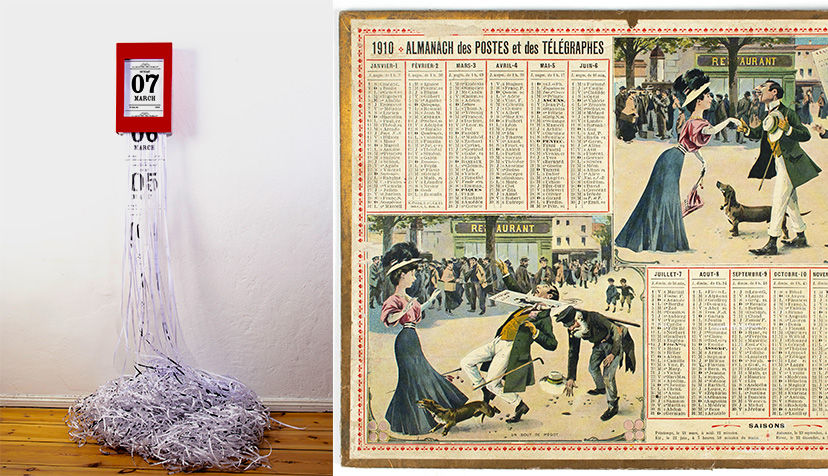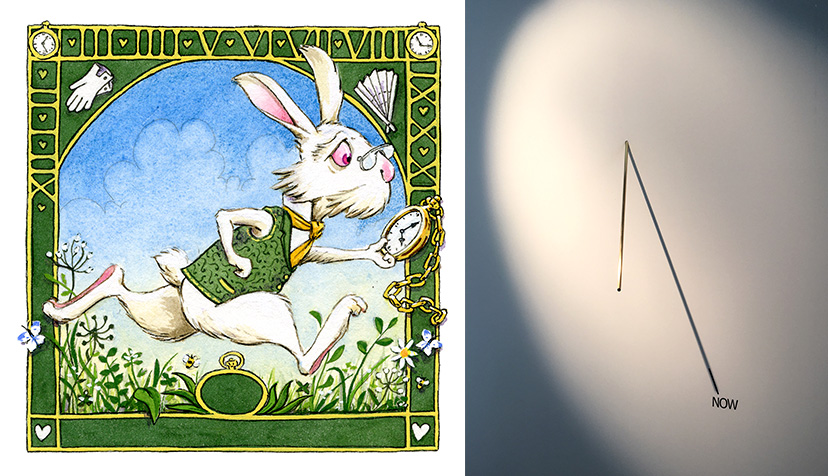
Manufacturing Time
Over the centuries, the Post Office and time have woven a unique and, in many ways, little-known story. This new exhibition explores the many facets of this history, using postal objects and works by contemporary artists to take visitors on a dizzying journey through history, art and imagination.
- 26 March 2025, 11:00 - 05 January 2026, 18:00
Exhibition presentation
By virtue of its history and its very activity, the Post Office is inextricably linked to the concept of time, and for centuries it has played a decisive role in measuring and managing time.
As early as 1839, the postal administration, whose activities were affected by the fact that time was not synchronised from one municipality to another, obtained an order from the Ministry of the Interior for municipal clocks to be set according to tables supplied by the Bureau des Longitudes, thus laying the foundations for a shared ‘national time’.
The rise of the railway in the mid-19th century further reinforced the need for a single time throughout the country, and it was the telegraph that enabled all public clocks to be synchronised with the time from the Paris Observatory.
These technical advances reflect a constant challenge for La Poste: to provide a fast, reliable and accurate service. Through the standardisation of time and the integration of new technologies, La Poste is establishing itself not only as a key player in the harmonisation of time, but also as an institution that is deeply rooted in societal transformations.
It is this relationship with time that the Musée de La Poste has decided to highlight in the exhibition The Manufacture of Time. To explore this theme, the museum has drawn on its resources and various collections. In all, over a hundred items are on display to the public.
Visitors will be able to admire some remarkable objects (a travel clock from the late eighteenth century, a mail coach watch from 1850), historical photographs (from 1887 to the present day), pieces of marcophily and philately (date stamps, postmarks, envelopes, etc.) and other artefacts (including some fifty almanacs from the early eighteenth century to the present day).
All these treasures and curiosities will be brought together with contemporary works of art that explore the measurement of time, providing a lively and fresh interpretation of heritage objects. Through an inspiring scenography, some fifty works of art in a variety of formats - videos, photographs, installations, objects, sculptures... - will question our perception of time while offering a poetic, philosophical and sometimes even humorous perspective on this theme.
Exhibition route
The exhibition is divided into 3 successive sections, with a contemporary scenography. Throughout the exhibition, visitors will be able to hear Étienne Klein's scientific and philosophical insights in the form of audio readings or written texts.
It's time to go! Let's get inside...
The exhibition begins by recalling the key dates in La Poste's relationship with the concept of time, dating back to 1839 with the initiative to coordinate time across the country. In 1933, La Poste and the Paris Observatory launched the ‘speaking clock’.
Section 1 - In real time
Here, all the works tell the time in real time! Immerse yourself in the instantaneity of time and discover how clocks are omnipresent in the history of La Poste.
Section 2 - Playing with time
Let yourself be drawn into a world where time is turned upside down! Artists are turning time measurement tools on their head to surprise you with works tinged with poetry and humour. After all, time is what you make of it.
Section 3 - Over the days
Take a step back and explore time as the days go by. From the iconic PTT almanacs to the works of emblematic artists, everything here is designed to give you an acute sense of the passage of time.
Contemporary artists
Darren Almond • Maarten Baas • Patrick Bailly-Maître-Grand • Lenora de Barros • Patrick Bernatchez • Dominique Blais • Claude Closky • Angela Detanico et Rafael Lain • Julien Discrit • Ruth Ewan • Mark Formanek • Philippe Geluck • Susanna Hertrich • Véronique Joumard • Stephen Kaltenbach • On Kawara • Olga Kisseleva • Alicja Kwade • Jorge Macchi • Annette Messager • Melik Ohanian • Roman Opalka • Laurent Pernot • Patricia Reed • Keith Robinson • Franck Scurti • Benjamin Vautier • dit Ben • Thomas Wattebled • Elsa Werth
Exhibition curators
Céline Neveux, exhibition curator, Musée de La Poste.
Etienne Klein, scientific advisor to the exhibition, philosopher of science and director of research at the French Atomic Energy and Alternative Energies Commission (CEA), member of the Académie des Technologies, professor at school Centrale-Supélec.



